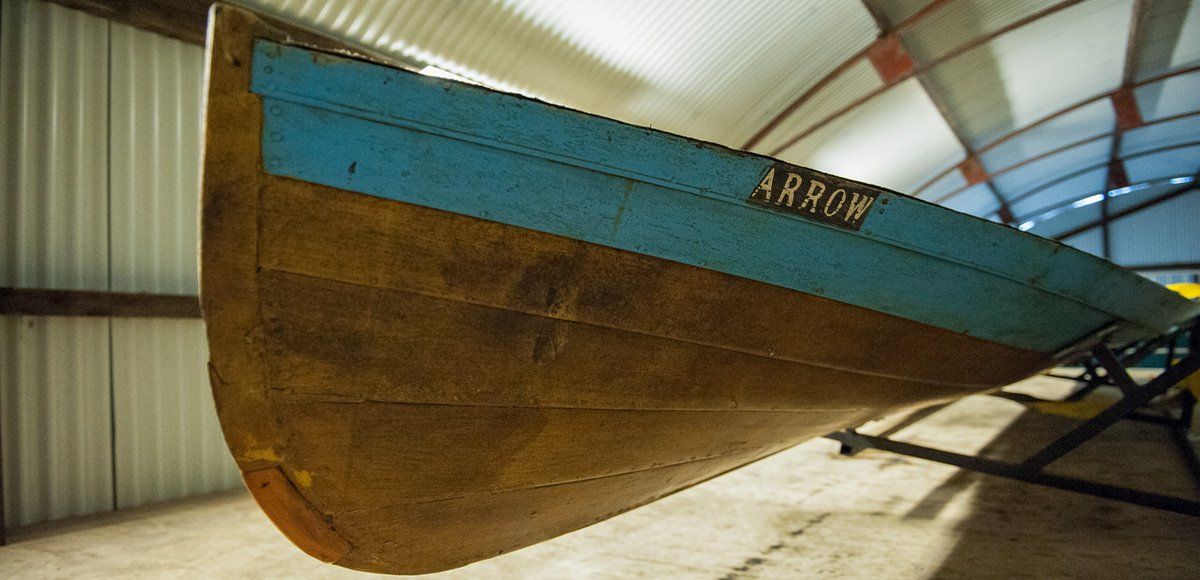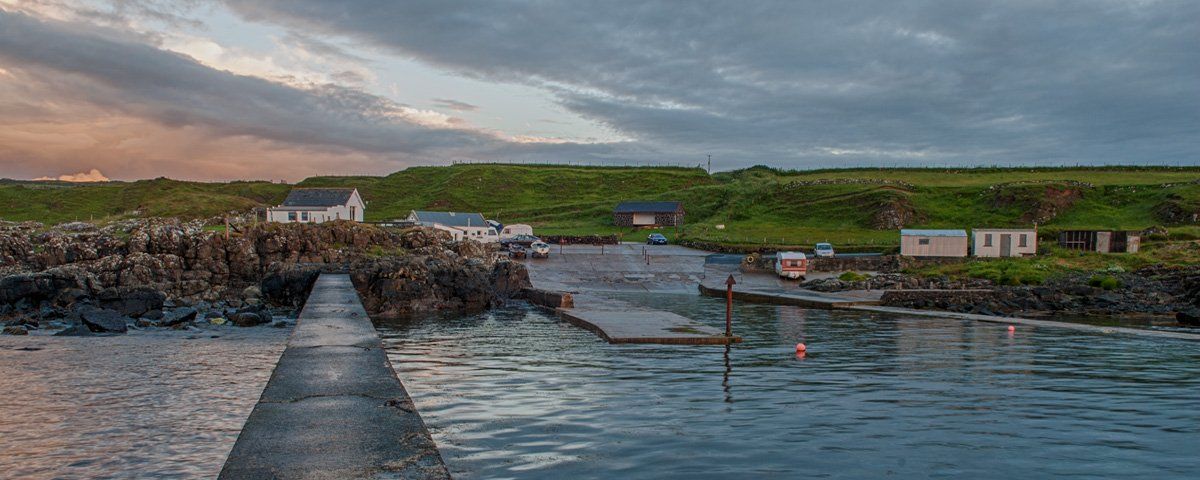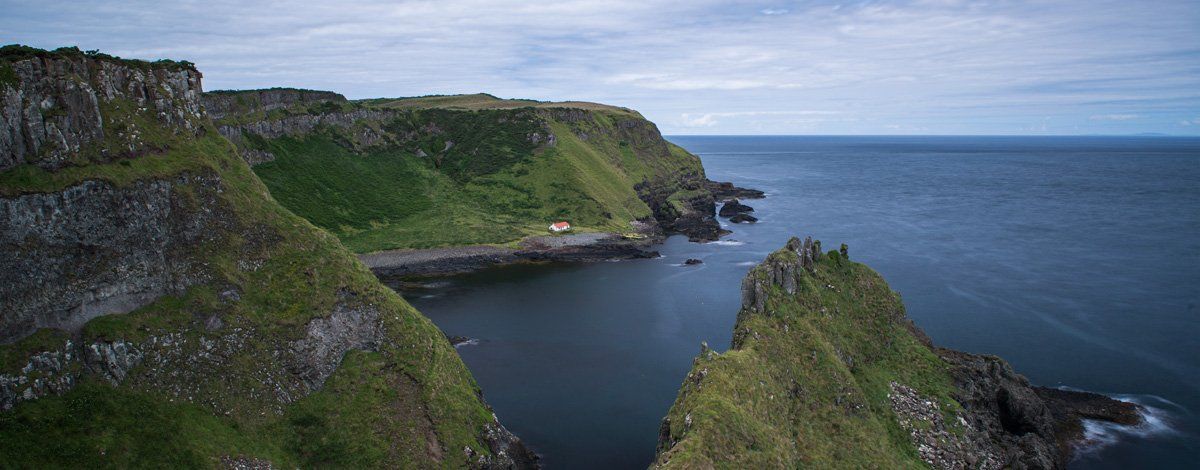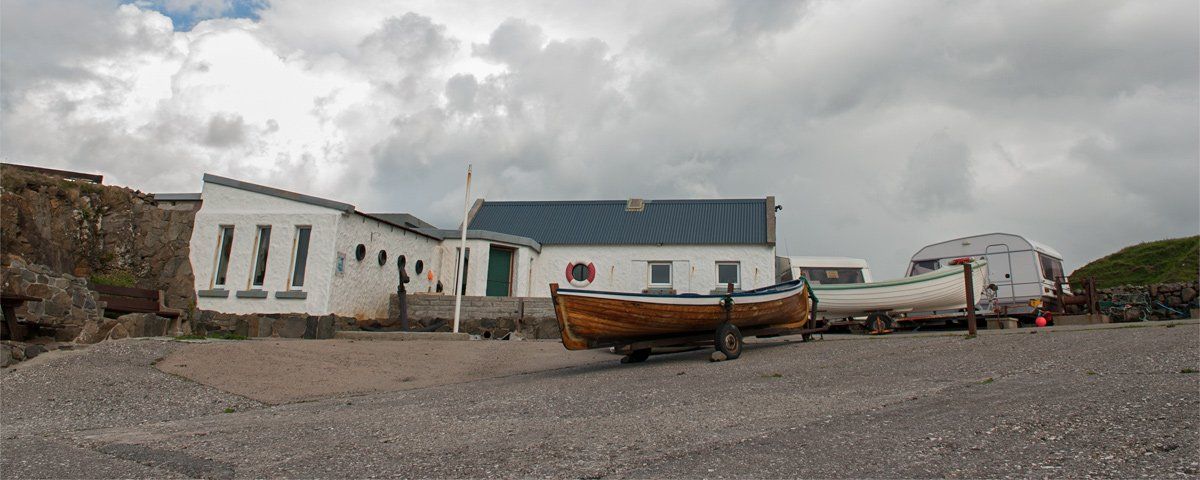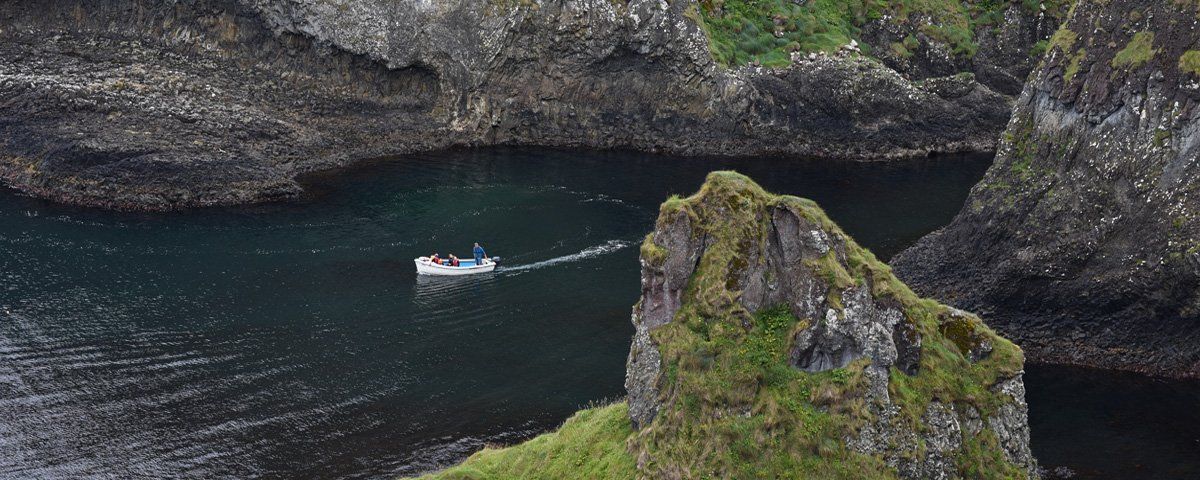At the National Trust's Innisfree Farm hanging from the rafters in the Boathouse Gallery is a unique piece of maritime heritage, the story behind this unique craft is just as fascinating as its journey to its present sanctuary. The boat was built around or possibly before 1850, the money for its construction was raised by public subscription organized by a Jackson Mill who at the time leased land around Port Moon. At the time of its construction, the bays along the Causeway headlands were places of work; kelp harvesting, fishing, cattle grazing and crop growing all took place between Runkerry and Dunseverick. The local name for the causeway bays was ‘Lochaber Shore’, a name which traces its origins to Scotland. Many other localnames such as the Aird have similar Scottish connections.
Fishing and rowing went hand in hand, the fishermen would be out whenever the weather allowed, they were strong powerful rowers and needed to be to tackle the seas and local tides. They would row to Raghery (Rathlin Island) and back in a day's fishing and on occasions when the catches and conditions were good, they would do it twice a day. Another task would be to row out with barrels packed with ice and fish to rendezvous with a passing schooner which would take them to markets in Belfast, Londonderry and Glasgow. On returning the barrels would be thrown over the side and the fishermen would have to row out as fast as they could to recover their barrels for the next shipment, this was before the infrastructure of roads and motor vehicles.
The ice for packing the fish was collected during the cold winters and preserved in basalt stone structures known as ice houses, these would keep the ice usable right through the summer. You can still see several examples around the coast at Portballintrae, Port Moon, Carrick a Rede and Kinbane. The ‘Arrow’ was designed and built to race, the boat's sleek shallow draught would carry four rowers and a coxswain. It was used by the fishermen of Dunseverick at racing events held during the summer months at Portbraddon, Ballintoy, Portballintrae, Portrush, Ballycastle and also further afield in Donegal and down the coast at Cushendall, Cushendun and Carnlough.
On Monday 14 October 1985, a day of a moderate swell on a calm sea, Sammy, James, myself and a couple of helpers went in the Gault’s boat to Portmoon, opened the upper end of the north gable of the bothy and, as our eyes became accustomed to the gloomy interior, we could see the old boat resting upside-down across the rafters, dusty, faded but with the words Arrow and Portmoon still legible on her sides. We eased her out into daylight. Never was an arrow removed from its quiver with such care and reverence. James braced the old boat with some netting strung over the top and we set her gently on the sea. A little water leaked through the shrunken timbers, but with a minimum of baling, we towed her, riding high over the sea, to Dunseverick Harbour – the Arrow’s first voyage for over 80 years.
She remained in storage at the Aird until 2012 when the Arrow project was handed over to Art Ward as part of the National Trust's Community Engagement program, an integral requirements in building the new visitor centre. Art went about making sure the Arrow kept its place in local history, he engaged with the Dunseverick Community Association and set about the next step for the Arrow, a complete restoration clean after over twenty years in the attic of a then dusty metal agricultural building at Innisfree Farm. Art picked up where Philip Watson left off and looked forward to seeing the Arrow displayed in the National Trust's Community Learning Centre now the Boathouse Gallery, where it can be seen today. The next planned and budgeted stage for the Arrow was to have a 3D scan of the vessel and from this create a plan for the construction of a replica by local boat builders, combining this with an community education program to build awareness of the rich local heritage and fishing traditions around the north coast. Post Covid the National Trust scrapped the previously agreed budget for the Arrow and other community programs, and shame on them for that. To date they still have not done anything substantial for the local community, most events are 'flower dressing' around the honey money pot of the Giants Causeway, the profits of which go into the regional and national coffers of the National Trust.

